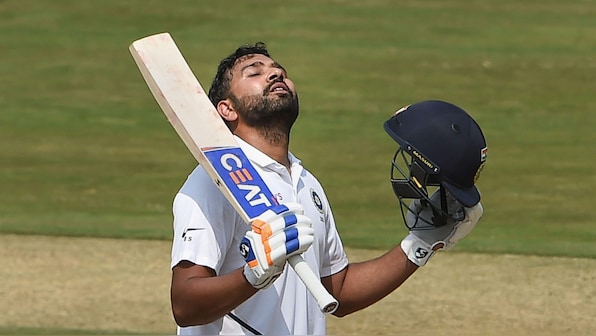Many, including commentators Ravi Shastri and Sunil Gavaskar, had believed Rohit Sharma had made the last of his Test appearances for India against Australia at the MCG after getting dismissed for scores of 3 and 9. Rohit, at that point, had collected just 31 runs at an average of 6.20 in what was a wretched tour Down Under, and 122 in what would be the last six Tests of his career at 11.09.
Rohit sat out of the next Test in Sydney, but remained defiant in his ambition to continue playing Test cricket despite his form and the fact that he was touching 38 years of age. The ‘Hitman’ even had the BCCI’s backing to continue captaining the team in the five-day format until a suitable successor was anointed, with Jasprit Bumrah unlikely to lead despite showing great potential due to his back issues.
The drama surrounding his Test future, however, came to an abrupt end on Wednesday evening with Rohit announcing his decision to retire from the format in a ‘Story’ on Instagram while Kolkata Knight Riders hosted Chennai Super Kings at the Eden Gardens, the venue where he began his Test journey more than a decade ago. What made the announcement all the more poignant was the inclusion of a picture of his Test cap (number 280).
The announcement, which comes on the heels of the Ajit Agarkar-led selection committee’s squad announcement for the marquee five-Test series in England starting next month, brings the curtains down on a career that certainly had its moments and only realised its full potential after the ‘Hitman’ was more than halfway into his playing career.
An explosive start and years of uncertainty
The year 2013 was one of transition in the Indian team, with Sachin Tendulkar bidding an emotional farewell to international cricket and legends of the game such as Virender Sehwag, Gautam Gambhir and Zaheer Khan slowly being phased out of the team in favour of younger stars.
It was during this time that Rohit, who had made his international debut shortly after India’s disastrous 2007 World Cup campaign, finally got an opportunity to shine at the Eden Gardens – the iconic venue that would become his stamping ground – during Tendulkar’s farewell series against West Indies. And he grabbed the opportunity with both hands with a knock of 177, the second-highest score by an Indian Test debutant.
One century led to another as he would smash an unbeaten 111 in the very next game at the Wankhede Stadium, although that knock was hardly in the conversation in an emotionally-charged game that was Tendulkar’s final match as an India cricketer.
The back-to-back centuries, followed shortly after by a valiant 72 against New Zealand at Auckland’s Eden Park, highlighted Rohit’s ability to make a difference in the Test format as well, and not just in the blue Indian kit. And yet the first six years of Rohit’s career were marked by uncertainty, as he found himself spending as much time on the bench as he did on the field, rarely getting the opportunity to play a full series.
Moving to the top of the order makes the difference once again
The story of Rohit the Test cricketer isn’t very different from his white-ball counterpart, even though the latter ranks among the all-time greats in the sport and not just in India and is a driving force behind the Hitman’s legacy.
Much like MS Dhoni’s decision to pair him with Shikhar Dhawan in the 2013 Champions Trophy that finally lent some stability to his fledgling career, it was Virat Kohli’s decision to have him open alongside Mayank Agarwal in the three-match Test series against South Africa in late 2019 that proved to be the turning point in Rohit’s red-ball run.
India needed a long-term Test opening pair after Dhawan and Murali Vijay gradually lost their place in the latter half of the previous decade, and Rohit rose to the occasion. Much like his heroics in 2013, Rohit made the position his own with majestic knocks of 176 and 212 in Visakhapatnam and Ranchi respectively – the latter being his only double-century in the Test format compared to three in ODIs.
Even as his opening partner varied from series to series, from Prithvi Shaw and KL Rahul to Yashasvi Jaiswal, Rohit remained a constant at the top of the batting order. And after six years of relative wilderness, Rohit would showcase the very best that he had to offer in the testing red-ball format in the five years that followed after his promotion in 2019.
It was during this five-year run that he produced some of his best Test knocks – from the 161 against England in Chennai to the 127 against England at The Oval – his first and till date only century in SENA countries. His career, in fact, can be divided into two halves – 1,585 runs in 27 Tests in his first six years and 2,716 in 40 post-2019. And it’s the latter that will ultimately define his run in the five-day format.
Let’s not forget his contributions as a Test captain either, with Rohit captaining the side in 24 matches – winning 12, losing 9 and drawing 3. Among captains who have led the country in a minimum of 10 Tests, he has the second-best win percentage (50) after Kohli (58.82). And that is after his disastrous run in his last two assignments, in which he lost five out of six matches and drew one.
Looking ahead
With his Test and T20I career behind him, Rohit will now focus fully on ODIs, his pet format. India, meanwhile, are likely to begin a new era in Test cricket by appointing a young leader, preferably someone who is a consistent performer, a proven leader and doesn’t have injury issues. Shubman Gill appears the frontrunner by ticking all three boxes, and with Rohit’s retirement, is set to move back to the top of the batting order alongside Yashasvi Jaiswal.
Rohit, meanwhile, can afford to pat himself on the back for now for making a considerable impact in the Test format despite not having the luxury of an uninterrupted run in the format from a young age. There aren’t too many batters out there who have scored 12 centuries in the format, all of which have come in a winning cause.


)
)
)
)
)
)
)
)
)